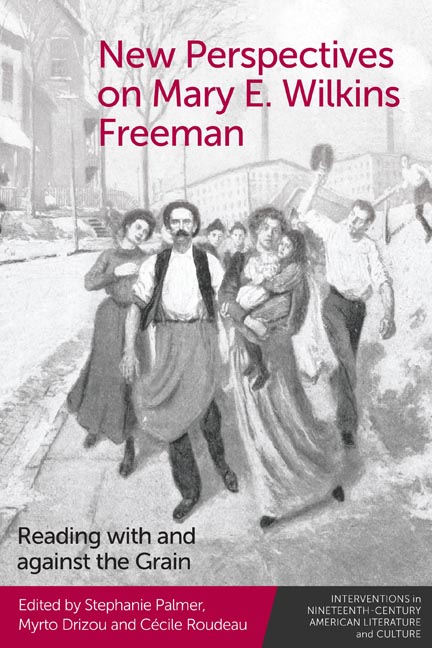Book contents
- Frontmatter
- Contents
- List of Figures
- Acknowledgments
- Contributors
- Reading Freeman Again, Anew
- Part I Kinship Outside of Normative Structures
- Part II Violent, Criminal, and Infanticidal: Freeman’s Odd Women
- Part III Women’s Work: Capital, Business, Labor
- Part IV Periodization Reconsidered
- Afterword: Why Mary E. Wilkins Freeman? Why Now? Where Next?
- Index
10 - Deconstructing Upper-Middle-Class Rites and Rituals: Reading Mary E. Wilkins Freeman’s Stories Alongside Mary Louise Booth’s Harper’s Bazar
Published online by Cambridge University Press: 20 October 2023
- Frontmatter
- Contents
- List of Figures
- Acknowledgments
- Contributors
- Reading Freeman Again, Anew
- Part I Kinship Outside of Normative Structures
- Part II Violent, Criminal, and Infanticidal: Freeman’s Odd Women
- Part III Women’s Work: Capital, Business, Labor
- Part IV Periodization Reconsidered
- Afterword: Why Mary E. Wilkins Freeman? Why Now? Where Next?
- Index
Summary
Launched in 1867, Harper’s Bazar: A Repository of Fashion, Pleasure and Instruction, was marketed as a high-end fashion magazine aimed at an uppermiddle- class audience of (white) women. Fashion, together with articles about manners, diet, health, furniture, and household management were naturally important subjects for the magazine; so were serialized novels, short stories, and poems—sometimes written by prominent authors. Delivering a discourse on upper-middle-class domesticity, the Bazar’s didactic columns taught women how to dress, what to buy and how to behave; in fact, it could be said that the magazine literally fashioned the identity of its readership into a socially acceptable one, where commodities played a key role. This conflation of gender with consumption, which promoted and reinforced the idea that to be a woman was to be a consumer, was a trademark feature of The Bazar, and would define the idea of American womanhood for a long time.
And yet, focusing on the outstanding personality of its first editor, Mary Louise Booth, Paula Bennett has shown that The Bazar had also a covert but clear feminist agenda. If Mary Louise Booth was at the head of a genteel fashion publication whose aim was to sell clothes and fashion women’s identity, Bennett explains, “[her] commitment to the women’s rights movement was steadfast throughout her adulthood” (226). Indeed, using her editorial privilege to “seed The Bazar with articles, poems, illustrations, and fiction critiquing traditional gender and class values and advocating a women’s right to substantive education, meaningful work and a decent wage” (Bennett 228), Booth sought to raise upper-middle-class women’s awareness of the world in which they lived. She gave them tools they could use to turn their social advantage to contribute to society, something which was made possible since “the audience of Harper’s Bazar consisted primarily of women who, because of their class privilege, were best positioned to take full advantage of such reforms as the magazine favored” (Bennett 228, my emphasis).
It is in the context of this covert but well-identified feminist perspective that I propose to read some of the stories Mary E. Wilkins Freeman published in The Bazar and to examine the role they played in the indirect but persistent feminist discourse of Booth’s editorial line.
- Type
- Chapter
- Information
- New Perspectives on Mary E. Wilkins FreemanReading with and against the Grain, pp. 182 - 200Publisher: Edinburgh University PressPrint publication year: 2023



